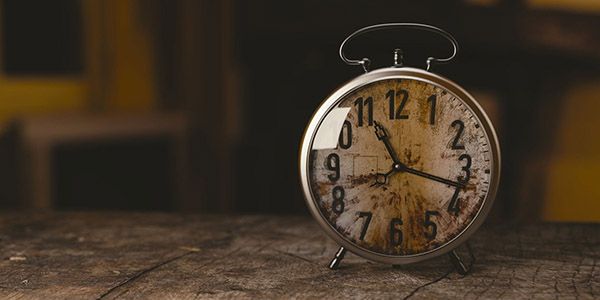
Delays in presenting with OCD
It is widely reported that people with OCD wait a long time before seeking help for their OCD, and they wait even longer before getting effective treatment. The generally-accepted figures are that:
- People with OCD wait, on average, eleven years with symptoms before they seek help, and;
- Wait 17 years from onset of OCD to receiving their first treatment.
But where do these figures come from? First, I will look at the key studies that provide us with these figures and second, I will look at a new study from Brazil that looks at the development of symptoms.
Key studies
Rasmussen & Tsuang, 1986
One of the first studies to look at these issues was Rasmussen & Tsuang, 1986.[1] They looked at the characteristics of 44 people who had been referred to a specialist OCD clinic in the USA for consultation and/or treatment.
Two thirds (64%) of the sample was women, and the average age was 26.3 for men, and 31.2 for women. The mean ± SD age of onset was 19.8 ± 11.5 years, and the mean ± SD age that people first sought help was 27.4 ± 11.2 years.
The authors commented that:
“Although the mean ± SD difference between age at onset of symptoms and age when they first sought psychiatric treatment was 7.6 ± 9.3 years, many patients with moderate to severe symptoms had a 10-20-year difference between age at onset and age at which they first sought psychiatric treatment.”
The Brown Longitudinal Obsessive-Compulsive Study (BLOCS)
The BLOCS was a larger study looking at the clinical features of 293 people seeking treatment for OCD between 2001 and 2004.[2] The authors include Steve Rasmussen (who was co-author in the above study) and Anthony Pinto (who helped develop the Family Accommodation Scale, FAS3).
Some key findings included:
“On average, individuals in the sample first received treatment more than 17 years after initially experiencing obsessive-compulsive symptoms and 11 years after meeting diagnostic criteria for OCD.”
They also looked at speed of onset and reported that:
“Eighty-one percent of the sample reported a gradual onset (≥ 3 months) of major obsessive compulsive symptoms, and 17% reported a sudden onset (≤ 1 month).”
What does the new study show?
The new study examined the interval between the onset of subthreshold OCD and onset of ‘full-blown’ OCD.[4] It was, therefore, a retrospective investigation of the speed of progression. They interviewed 954 people with OCD using a structured interview, along with clinical ratings.
They way they did this was to calculate the interval between the onset of 'subthreshold' OCD symptoms (not associated with distress) and the development of symptoms associated with distress.
The authors reported that:
“It took a median of 7 years (interquartile range: 2–13; minimum: 0; maximum 50 years) for subthreshold symptoms to convert to diagnosable OCD. Interestingly, 179 participants (18.8%) reported less than 1 year for such conversion.”
This means that 50% of people have around 7 years between developing milder/ subthreshold symptoms and having sufficient symptoms to warrant a full diagnosis of OCD. Also, one-in-five people had less than one year for this conversion to occur.
A shorter duration of 'subthreshold' OCD symptoms was associated with:
a) younger age at assessment;
b) greater severity of sexual/ religious symptoms;
c) lower severity of hoarding symptoms;
d) lower severity of compuslive symptoms on the Y-BOCS;
e) male sex.
Is this information reliable?
Probably, but we have to understand the limitations. Even though they used the Yale OCD Natural History Questionnaire to increase the reliability of information regarding age of onset, and duration of symptoms, it is still dependent on recall.
We have seen above that there are additional delays between onset of ‘full-blown’ OCD symptoms and presenting for help, so there are always going to be long gaps between first symptoms and later assessment. The use of distress as the cut-off between 'subthreshold' and diagnosable OCD is logical, but it still relies on people being able to recall when their distress became clinically-relevant.
What does it mean?
These observational findings are consistent with other studies reporting long delays between symptom onset, first presentation, and receipt of effective treatment. We know that it can be over a decade before people with OCD receive treatment and during this time there is (by definition) a degree of functional and social impairment and/or distress.
Minimising these delays is likely to reduce the overall impacts of the illness, as well as improving individual outcomes. However, better screening, more effective detection, and appropriate resources for assessment and treatment are all likely to be required to achieve this.
References
1. RASMUSSEN SA, TSUANG MT. Clinical Characteristics and Family History in DSM-III Obsessive-Compulsive Disorder. American Journal of Psychiatry. 1986; 143(3): 317-322. https://doi.org/10.1176/ajp.143.3.317
2. PINTO A, MANCEBO MC, EISEN JL, PAGANO ME, RASMUSSEN SA. The Brown Longitudinal Obsessive Compulsive Study: Clinical Features and Symptoms of the Sample at Intake. Journal of Clinical Psychiatry. 2006; 67(5): 703-711. https://doi.org/10.4088/jcp.v67n0503
3. WU MS, PINTO A, HORNG B, PHARES V, MCGUIRE JF, DEDRICK RF, VAN NOPPEN B, CALVOCORESSI L, STORCH EA. Psychometric Properties of the Family Accommodation Scale for Obsessive-Compulsive Disorder - Patient Version. Psychological Assessment. 2016; 28(3): 251-262. http://dx.doi.org/10.1037/pas0000165
4. THOMPSON EM, TORRES AR, ALBERTELLA L, FERRÃO YA, TIEGO J, SHAVITT RG, CONCEIÇÃO DO ROSARIO M, MIGUEL EC, FONTENELLE LF. The speed of progression towards obsessive-compulsive disorder. Journal of Affective Disorders. 2020; 264: 181-186. https://doi.org/10.1016/j.jad.2019.12.016
Last Updated on 28 October 2023 by David Christmas
